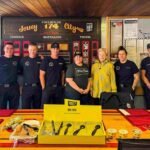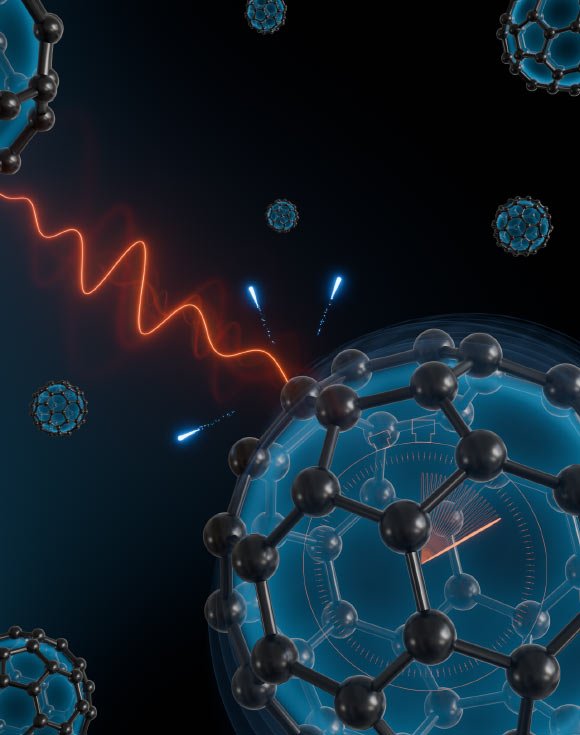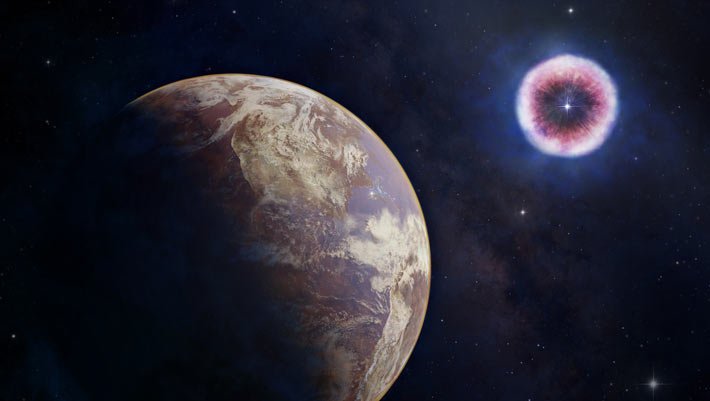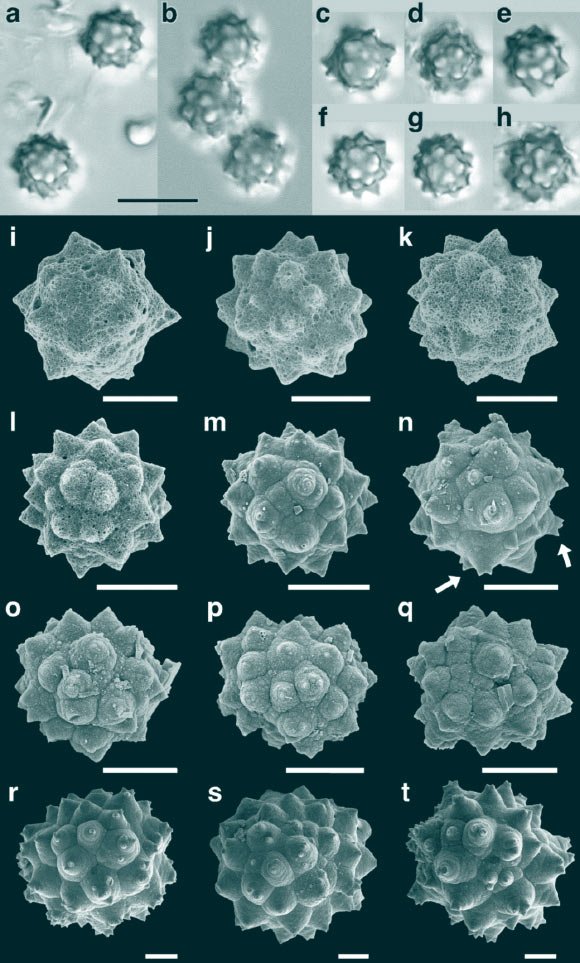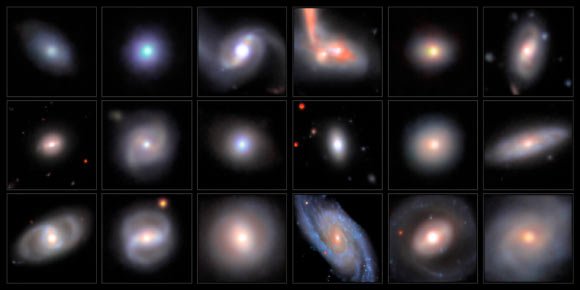Physicists from SLAC National Accelerator Laboratory and the University of Hamburg have observed how electrons, excited by ultrafast light pulses, danced in unison around a subnanometer C60 fullerene (buckminsterfullerene) molecule.

Biswas et al. observed how electrons, excited by ultrafast light pulses, danced in unison around a buckminsterfullerene molecule, then emitted excess energy in the form of several electrons. Image credit: RMT Bergues.
The synchronized dance of electrons, known as plasmonic resonance, can confine light for brief periods of time.
That light-trapping ability has been applied in a wide range of areas, from turning light into chemical energy to improving light-sensitive gadgets and even converting sunlight into electricity.
While they’ve been studied extensively in systems from several centimeters across to those just 10 nanometers wide, this is the first time researchers were able to break the field’s ‘nanometer barrier.’
Early studies have indicated that when plasmonic resonances unfold at incredibly small scales, new phenomena emerge, allowing light to be confined and controlled with unprecedented precision.
This characteristic makes understanding exactly how resonances play out at small scales a very interesting topic for researchers.
“To better understand plasmonic resonance, we excite electrons around a particle, then wait for them to release their excess energy by emitting an electron,” said Dr. Shubhadeep Biswas of SLAC National Accelerator Laboratory and colleagues.
“By timing that interval, we can determine whether true resonance — with all electrons moving in unison — has occurred, or if just one or two electrons were affected.”
“However, these resonances happen at ultrafast timescales — mere attoseconds, or billionths of a billionth of a second.”
“Observation of these resonances in real time was beyond the reach of existing technologies.”
Using attosecond, extreme ultraviolet light pulses, the authors triggered and recorded the behavior of electrons within soccer-ball-shaped buckminsterfullerene molecules that measure just 0.7 nanometers in diameter.
They precisely timed the process, from the instant light excited the electrons to the moment electrons were emitted, expelling excess energy and allowing the remaining electrons to relax into their usual orbits.
Each cycle lasted between 50 to 300 attoseconds, and measurements indicated that the electrons were behaving with strong coherence, like disciplined dancers performing in unison.
“These findings demonstrate, for the first time, that attosecond measurements can provide valuable insights into plasmonic resonances at scales smaller than a nanometer,” Dr. Biswas said.
This breakthrough allows researchers to evaluate a new range of super-small particles, revealing plasmonic characteristics that could enhance the efficiency of existing technologies and lead to novel applications.
“With this measurement, we are unlocking new insights into the interplay between electron coherence and light confinement at sub-nanometer scales,” said Professor Matthias Kling, a physicist at SLAC National Accelerator Laboratory and Stanford University.
“This work demonstrates the power of attosecond techniques and opens the door to novel approaches in manipulating electrons in future ultrafast electronics, that could be operating at up to a million times higher frequencies than current technology.”
“This cutting-edge research is opening new avenues for the development of ultra-compact, high-performance platforms, where light-matter interactions can be controlled by taking advantage of quantum effects emerging at the nanoscale,” said University of Hamburg’s Professor Francesca Calegari.
The findings were published in the journal Science Advances.
_____
Shubhadeep Biswas et al. 2025. Correlation-driven attosecond photoemission delay in the plasmonic excitation of C60 fullerene. Science Advances 11 (7); doi: 10.1126/sciadv.ads0494

